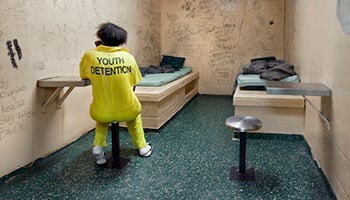This report examines the effectiveness of two techniques for cleaning and correcting incomplete address information in research databases. It utilizes data collected from residents of White Center, Wash., as part of Annie E. Casey Foundation’s Making Connections initiative.
Read More
A Multicultural Approach to Building and Sustaining Resident Involvement
In 2006, the Annie E. Casey Foundation facilitated a peer match between two Making Connections sites: Oakland, Calif., and White Center in Seattle. The goal was to teach residents and community partners in Oakland about White Center’s Trusted Advocates program, which utilizes respected local leaders to engage minority groups in community change. This report recaps how the peer match evolved, why the Trusted Advocates model works and exactly what information the two sites exchanged.
Making Connections is an ambitious 10-site, long-term initiative devoted to advancing the premise that supportive communities can help empower families and enhance outcomes for children.
Read More
Detention Reform Brief 1
The Casey Foundation’s Juvenile Detention Alternatives Initiative (JDAI) describes how communities in its program have reduced wasteful spending on unnecessary jail time for kids.
Read More
Creating Successful Futures for Children and Families
Seattle was the home of UPS founder Jim Casey and his siblings, who created the Annie E. Casey Foundation in honor of their mother and committed it to serving disadvantaged kids. This publication features some of the Casey projects and partnerships that reflect that commitment, including Seattle Jobs Initiative, a decade-long effort to link low-income men and women with a living wage; Making Connections White Center, which demonstrates how communities and residents can lead efforts to improve tough neighborhoods; and Thrive by Five, a public-private partnership that aims to improve, expand and promote early childhood education in the state.
Read More
Stories from Rural Northwest Families
This report tells the story of the Northwest Rural Communities Project, which gathered resident feedback and relevant statistics to paint a picture of what life is like for families in rural Oregon and Washington.
Read More
Parents’ Work and Children’s Welfare in the Annie E. Casey Foundation’s Jobs Initiative
Researchers spent 18 months following families to better understand how parental employment intersects with child well-being. Their study focused on 10 low-income families from two Jobs Initiative sites — Seattle and Milwaukee. The goal? Learn how workforce development impacts a parent’s job mobility and if this mobility — or lack thereof — affects their kids.
Read More
Part One, Building Support for Child Welfare’s Frontline Workers
This manual discusses tools, skills, issues and dilemmas related to safety for child welfare professionals who work with families in their homes and neighborhoods.
Read More
Building Community Partnerships in Child Welfare, Part Four
Neighborhood connections help build communities and lift struggling families out of poverty. This guide shows families and communities how to strengthen neighborhoods and improve the quality of life through strong neighborhood connections.
Read More
The Story of a Community-Based Strategy to Reduce Teen Pregnancy
This is the story of how five different communities worked to protect local youth from the risks of early sexual activity. This is the story of Plain Talk.
Read More




